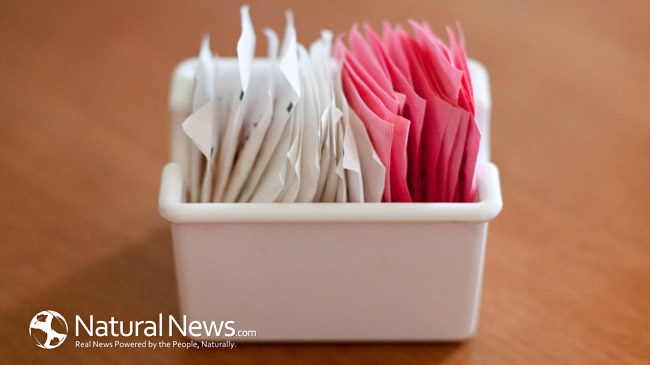“Plain Jane” is such a rare description of today’s food industry, especially in the U.S. that is dominated by processed foods. This all changed and started when artificial sweeteners were discovered in 1879 by Ira Remsen. This researcher from John Hopkins University accidentally spilled a derivative of coal tar on his hand. To his surprise, this chemical was quite tasty. This famous spill led to what we know today as saccharin found in Sweet-n-Low. Saccharin is just one of the many types of artificial sweeteners. The list includes aspartame (Equal, NutraSweet, and Advantame), Sucralose (Splenda), and acesulfame potassium (Sunett, Sweet One), Truvia, SweetLeaf, and PureVia. The 5 five FDA-approved nonnutritive sweeteners are saccharin, aspartame, acesulfame potassium, sucralose, and neotame (as opposed to nutritive sweeteners that do have calories). These sugar substitutes meant to be used in place of table sugar and corn syrup. Stevia has the reputation as the natural sweetener because its source is from a South American plant. It’s extraction process, however, is not entirely natural.
Many use these substances as part of a weight loss approach and to help control diabetes. They do offer the same sweetness without the calories of sugar. They’re actually 30 to 80,00 times more sweet than table sugar. Each gram of sugar contains 4 calories whereas most artificial sweeteners can have zero. Products typically high in sugar like salad dressings, sauces, and beverages are attractive when the label reads ZERO for sugar. This makes eating less for dieters a lot easier to bear and still allows variety. Feelings of deprivation are one of the primary reasons people don’t follow through with a diet. The artificial sweeteners basically don’t count. This doesn’t mean there’s no limit to products with artificial sweeteners. Eating 2 cookies not 12 because they have artificial sweeteners doesn’t offset portion control rules.
At this point in time, there is no science that artificial sweeteners cause poor health effects. The rumors of cancer risks have not been validated. However, moderation is always important. For saccharin, the FDA recommends for beverages not to exceed 12 mg/fluid ounce, and in processed food, the amount is not to exceed 30 mg per serving. For aspartame, the FDA has set the acceptable daily intake (ADI) for aspartame at 50 mg/kg of body weight. For sucralose, the FDA has set the acceptable daily intake (ADI) for sucralose was set at 5 mg/kg of body weight/day. The FDA refers to artificial sweeteners as Generally Recognized as Safe (GRAS). This means that there are not a 100% guarantee sweeteners are totally safe. It is of interest that these flavorful sweeteners were developed from an accidental chemical mishap. What is deemed reasonably safe may not be in the long run. Pleasing your taste buds isn’t the first rule when it comes to nutrition.
https://www.ncbi.nlm.nih.gov/pmc/articles/PMC2951976/
https://www.ncbi.nlm.nih.gov/pmc/articles/PMC3198517/








